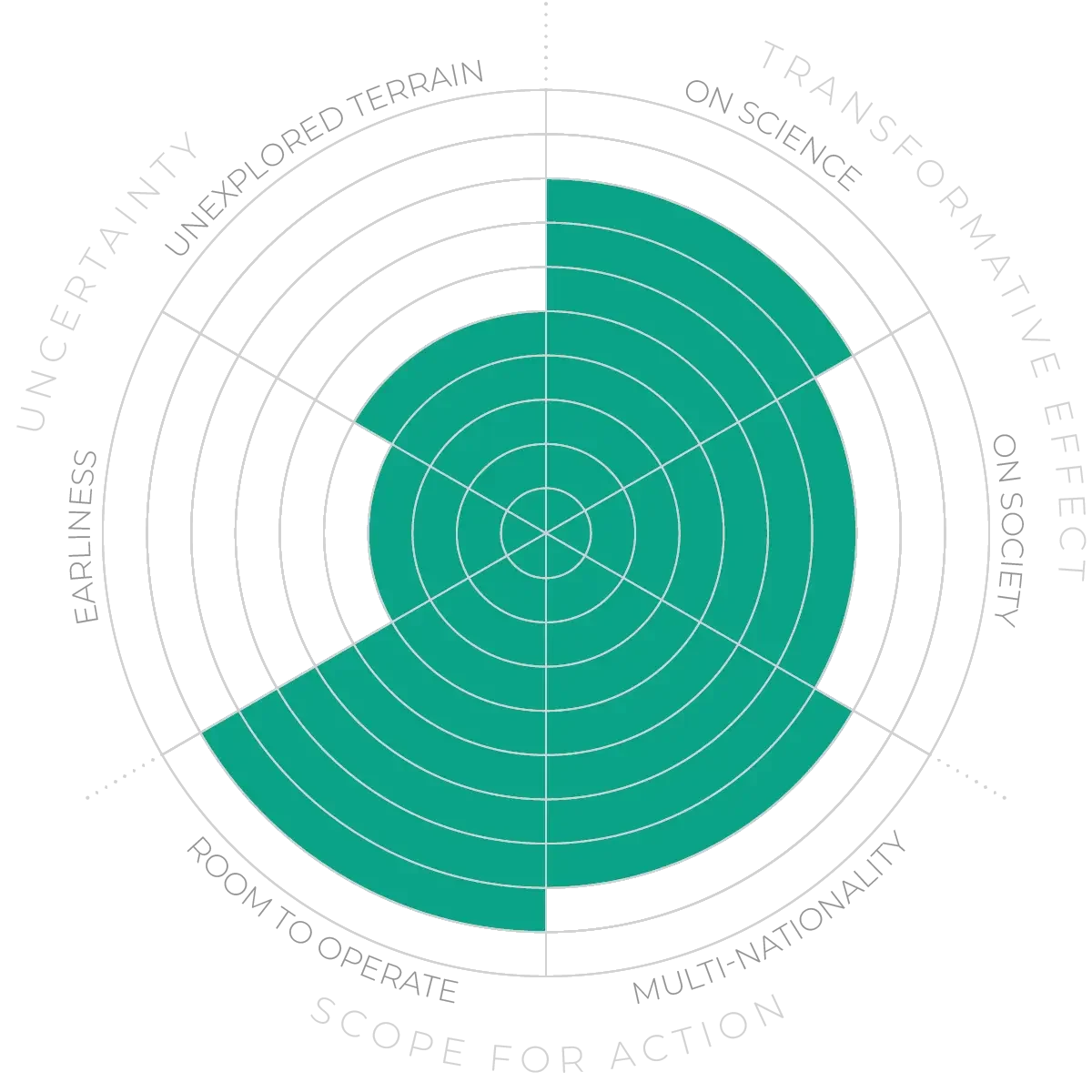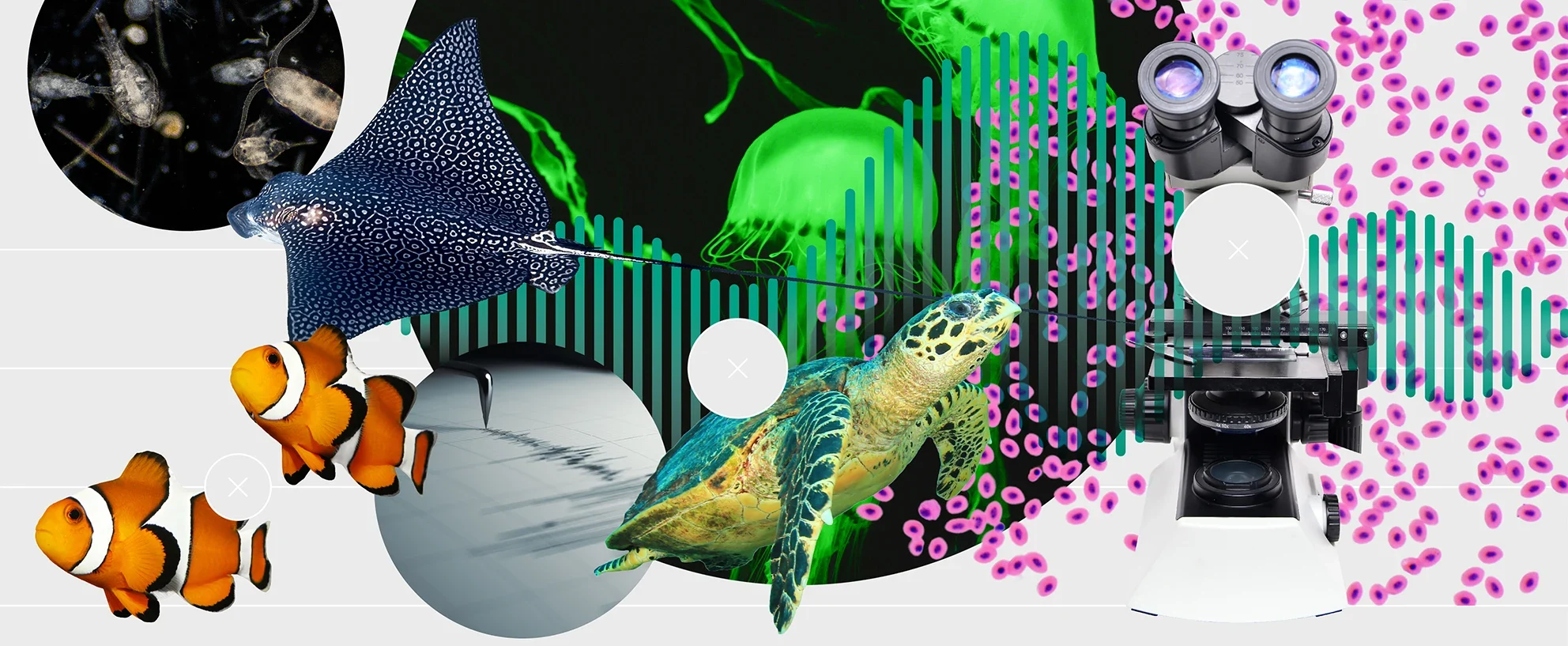Future Horizons:
10-yearhorizon
Biodiversity tracking aids conservation efforts
25-yearhorizon
Species-specific forecasting comes of age
Technologies like eDNA and metagenomics are revealing unprecedented diversity in the “ocean genome”,14 aided by sampling programmes such as Tara Oceans.15 Bio-logging enables remote tracking of animal behaviour,16 while acoustic sensors are increasingly contributing to biodiversity assessments.17 Furthermore, machine learning can be used to make sense of vast datasets, for example characterising the functional traits of plankton.18 There remains a need for consistent identifiers across different kinds of biodiversity data so researchers can make links between databases.
The immense variety of microbial marine life19 is only now coming to light20 — as are the complex ecosystems found in deep-sea water, as well as on and In the deep seabed.21,22,23,24 As the climate warms, some species are moving to new areas, creating an urgent need to understand which ones are becoming invasive.25 More broadly, there is a need for more tracking of biodiversity, both to establish baselines and to follow trends as climate change26 and other human impacts mount up.27 Although warming is slower in the deep ocean, research suggests that its biodiversity is no less exposed than that of surface waters because of free-drifting (pelagic) larval stages in many deep-ocean organism life cycles and because of most deep-sea organisms’ adaptation to cold and stable conditions. Indeed, projections indicate that, while mitigation could limit threats to surface biodiversity, deep-ocean biodiversity will face an unavoidable escalation in threat.28 The ongoing threats to ocean biodiversity will limit the potential of marine genetic resource use.
Ocean biodiversity - Anticipation Scores



